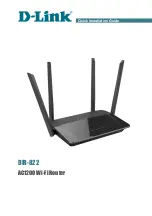
519
Configuring System Message Logging
How to Configure System Message Logging
Default System Message Logging Configuration
How to Configure System Message Logging
Disabling Message Logging
Message logging is enabled by default. It must be enabled to send messages to any destination other than the console.
When enabled, log messages are sent to a logging process, which logs messages to designated locations
asynchronously to the processes that generated the messages.
Disabling the logging process can slow down the switch because a process must wait until the messages are written to
the console before continuing. When the logging process is disabled, messages appear on the console as soon as they
are produced, often appearing in the middle of command output.
Setting the Message Display Destination Device
If message logging is enabled, you can send messages to specific locations in addition to the console. Beginning in
privileged EXEC mode, use one or more of the following commands to specify the locations that receive messages:
Feature
Default Setting
System message logging to the console
Enabled.
Console severity
Debugging (and numerically lower levels).
Logging file configuration
No filename specified.
Logging buffer size
4096 bytes.
Logging history size
1 message.
Time stamps
Disabled.
Synchronous logging
Disabled.
Logging server
Disabled.
Syslog server IP address
None configured.
Configuration change logger
Disabled.
Server facility
Local7.
Server severity
Informational (and numerically lower levels).
Command
Purpose
1.
configure terminal
Enters global configuration mode.
2.
no logging console
Disables message logging.
3.
end
Returns to privileged EXEC mode.
Summary of Contents for IE 4000
Page 12: ...8 Configuration Overview Default Settings After Initial Switch Configuration ...
Page 52: ...48 Configuring Interfaces Monitoring and Maintaining the Interfaces ...
Page 108: ...104 Configuring Switch Clusters Additional References ...
Page 128: ...124 Performing Switch Administration Additional References ...
Page 130: ...126 Configuring PTP ...
Page 140: ...136 Configuring CIP Additional References ...
Page 146: ...142 Configuring SDM Templates Configuration Examples for Configuring SDM Templates ...
Page 192: ...188 Configuring Switch Based Authentication Additional References ...
Page 244: ...240 Configuring IEEE 802 1x Port Based Authentication Additional References ...
Page 298: ...294 Configuring VLANs Additional References ...
Page 336: ...332 Configuring STP Additional References ...
Page 408: ...404 Configuring DHCP Additional References ...
Page 450: ...446 Configuring IGMP Snooping and MVR Additional References ...
Page 490: ...486 Configuring SPAN and RSPAN Additional References ...
Page 502: ...498 Configuring Layer 2 NAT ...
Page 770: ...766 Configuring IPv6 MLD Snooping Related Documents ...
Page 930: ...926 Configuring IP Unicast Routing Related Documents ...
Page 976: ...972 Configuring Cisco IOS IP SLAs Operations Additional References ...
Page 978: ...974 Dying Gasp ...
Page 990: ...986 Configuring Enhanced Object Tracking Monitoring Enhanced Object Tracking ...
Page 994: ...990 Configuring MODBUS TCP Displaying MODBUS TCP Information ...
Page 996: ...992 Ethernet CFM ...
Page 1066: ...1062 Using an SD Card SD Card Alarms ...
















































